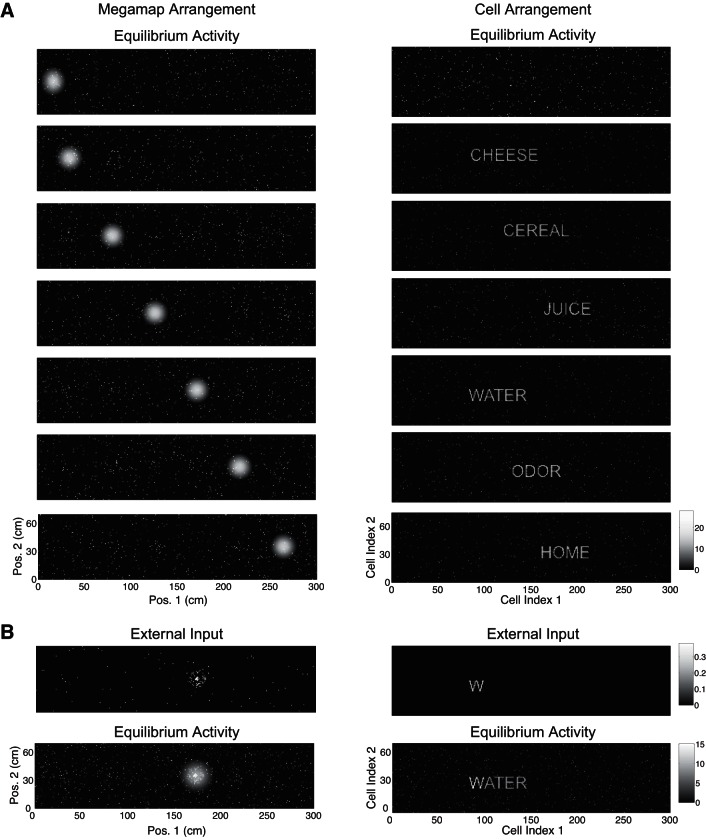Fig. 14.
Dual interpretation of network activity patterns: example 1. The inherent flexibility of place cell recombinations permits the megamap to incorporate nonspatial information at no additional cost. For this example, the megamap represents a rectangular region with 6 nonspatial cues. A: when the animal is located at each of 7 locations, the equilibrium firing rates (Hz) are visualized in 2 ways by resorting cells (Fig. 13). The single network activity vector encodes the animal's location through a localized activity bump on the megamap (left) while simultaneously representing the nonspatial cue at that location (right). Place cells must be flexibly recombined over the megamap since the subsets of active cells representing the 6 cues overlap one another. B: the attractor network can perform pattern completion. Top, only cells representing the letter “W” receive external input. Bottom, cells representing the entire pattern (“WATER”) are active in the equilibrium activity. The initial state is random. Supplemental Video S1 shows the 2 visualizations as the animal moves continuously across the region.

